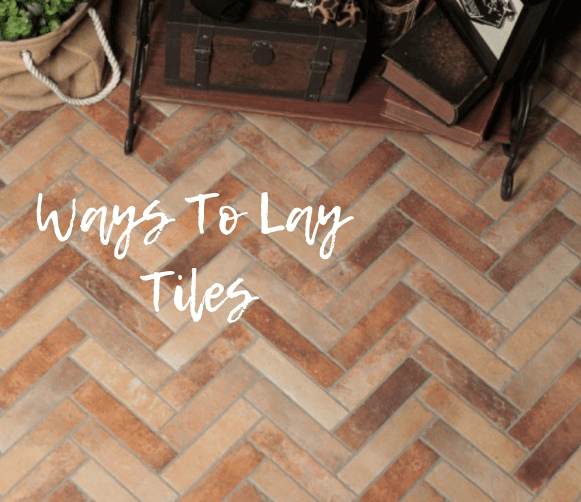
Knowing how to lay your tiles is often the key to tying your room together. Laying them in the wrong pattern can make your room feel disordered, disrupting the beautiful decor and furniture that surrounds it.
Here we’ll help you understand the different types of tile patterns that are trending in 2018, as well as showcasing them in real life examples.
1. Herringbone
Possibly one of the most popular tile patterns we’ve seen rise throughout 2018, the Herringbone pattern creates a sense of space in a small room, adding graceful movements and flow.
To get this look, you require subway-style tiles such as Rowan Wood Effect Tile. Then, you must lay these tiles so that they point up a wall or floor in a “V” shape.
Differently, they can be laid so that they keep this “V” shape but look to run across the wall or floor. See the below image for an example.
To define the pattern, we recommend using contrasting grout or alternatively, you can match the grout with the tile colour for a more free-flowing pattern.
Tip: By choosing a tile range that contains a mix of colours you can combine these to create a personal and playful look within your home.
For an edgy look, you can use three of the Manhattan tiles and for a more rustic feel, you can use a choice of different Boston Brick North East tiles.
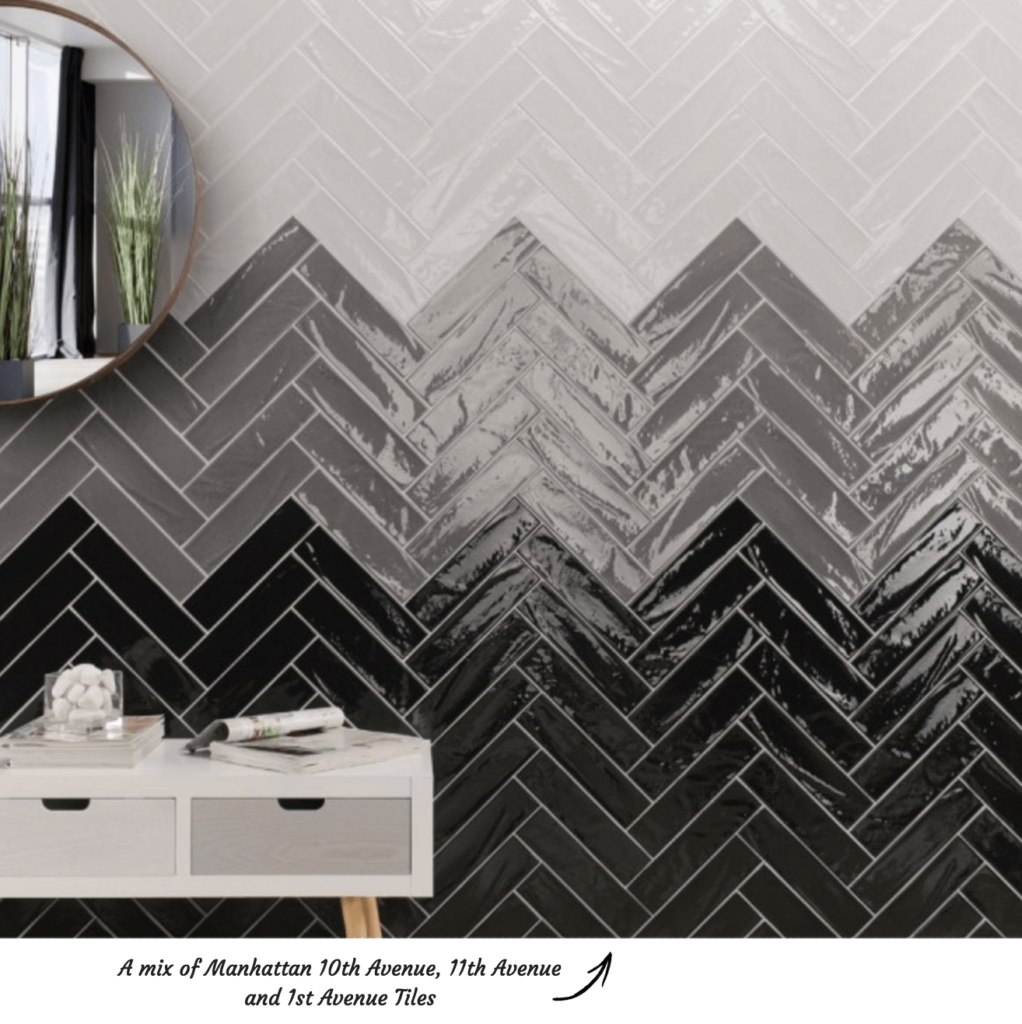
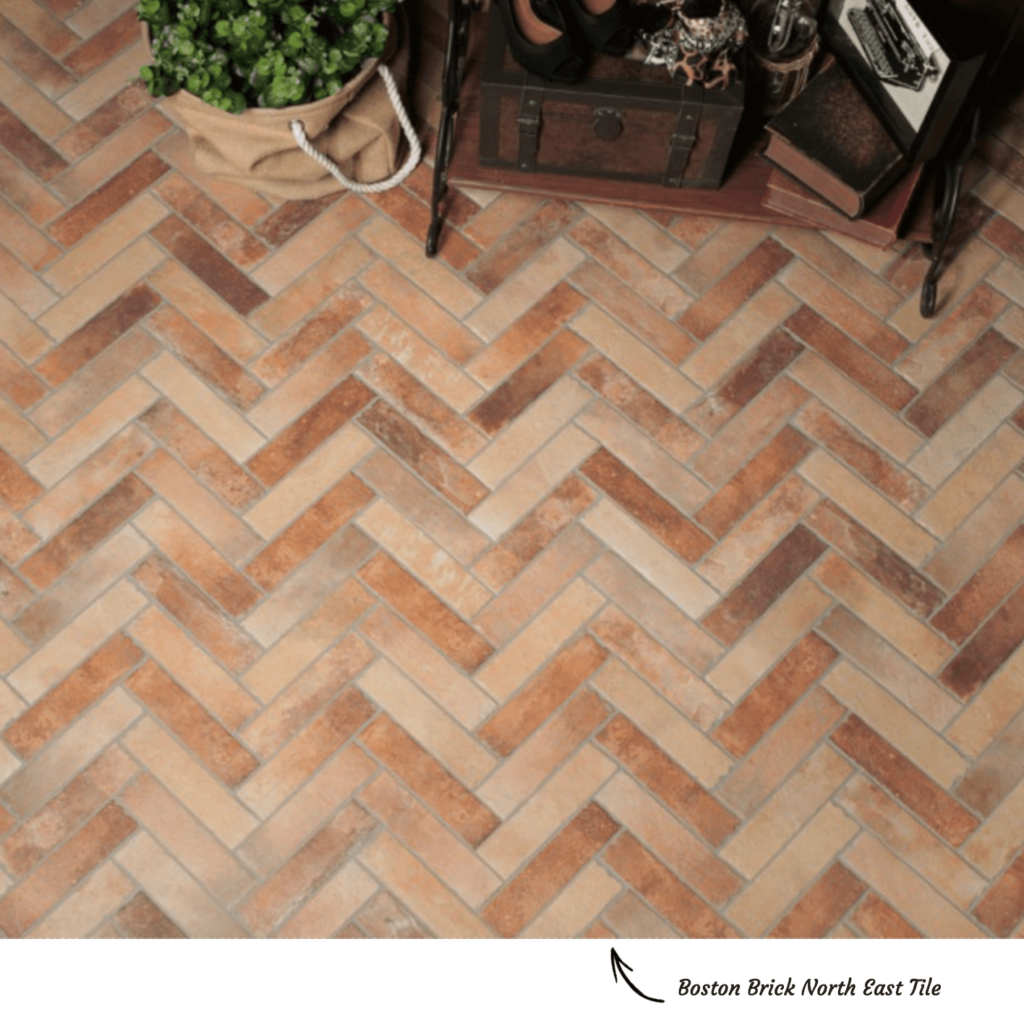
2. Brick Bond
Another highly popular tile pattern is the Brick Bond. This consists of a simple pattern style that’s perfect for creating a metropolitan aesthetic. If you’re looking to add the original subway-style effect on your walls or floor, this is the tile pattern you’ll require.
To create this look, you need to make sure you’ve got the correct tile. Use a rectangular tile with a height is at least half the size of its width when laid lengthways. Then you can simply lay your tiles horizontally with an offset of 50%.
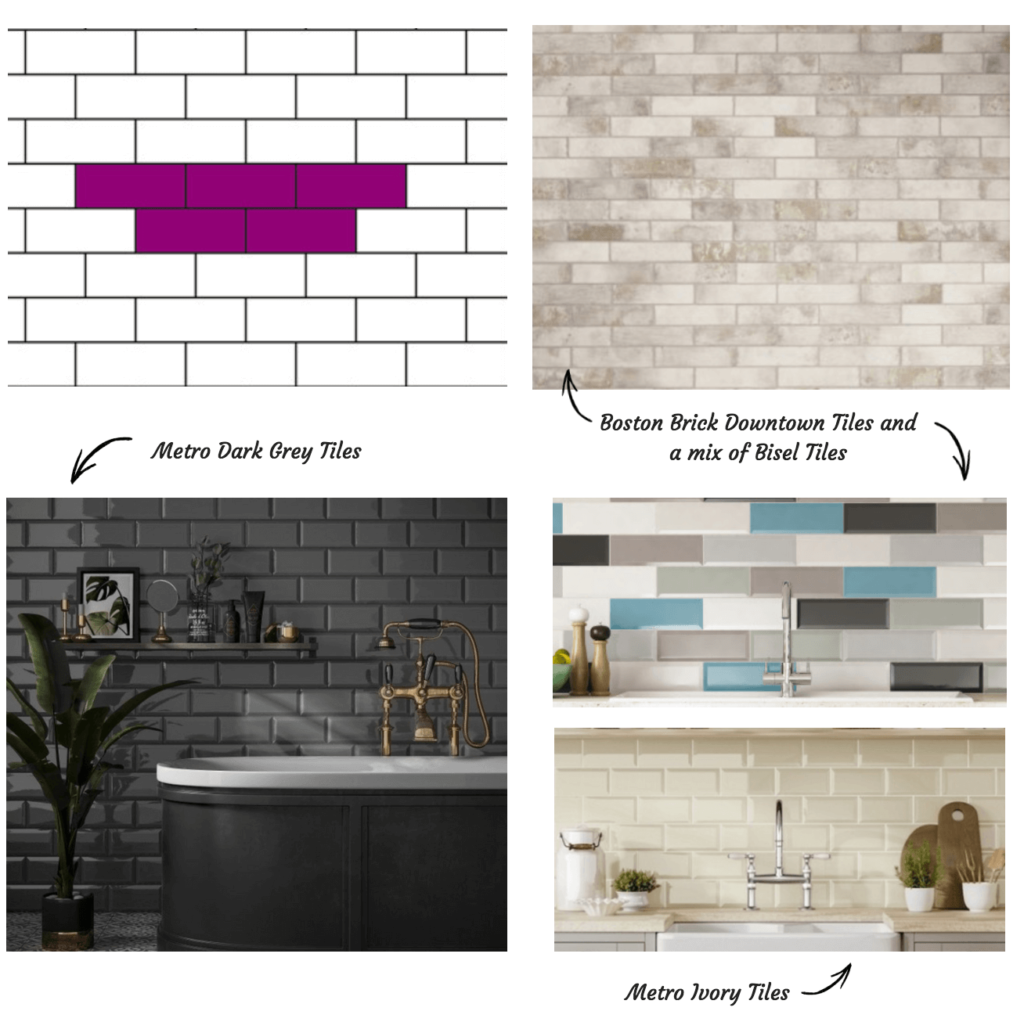
Again, you can mix and match between the different colours available to create your very own design. The example below is created using both the Metro Black and the Metro White
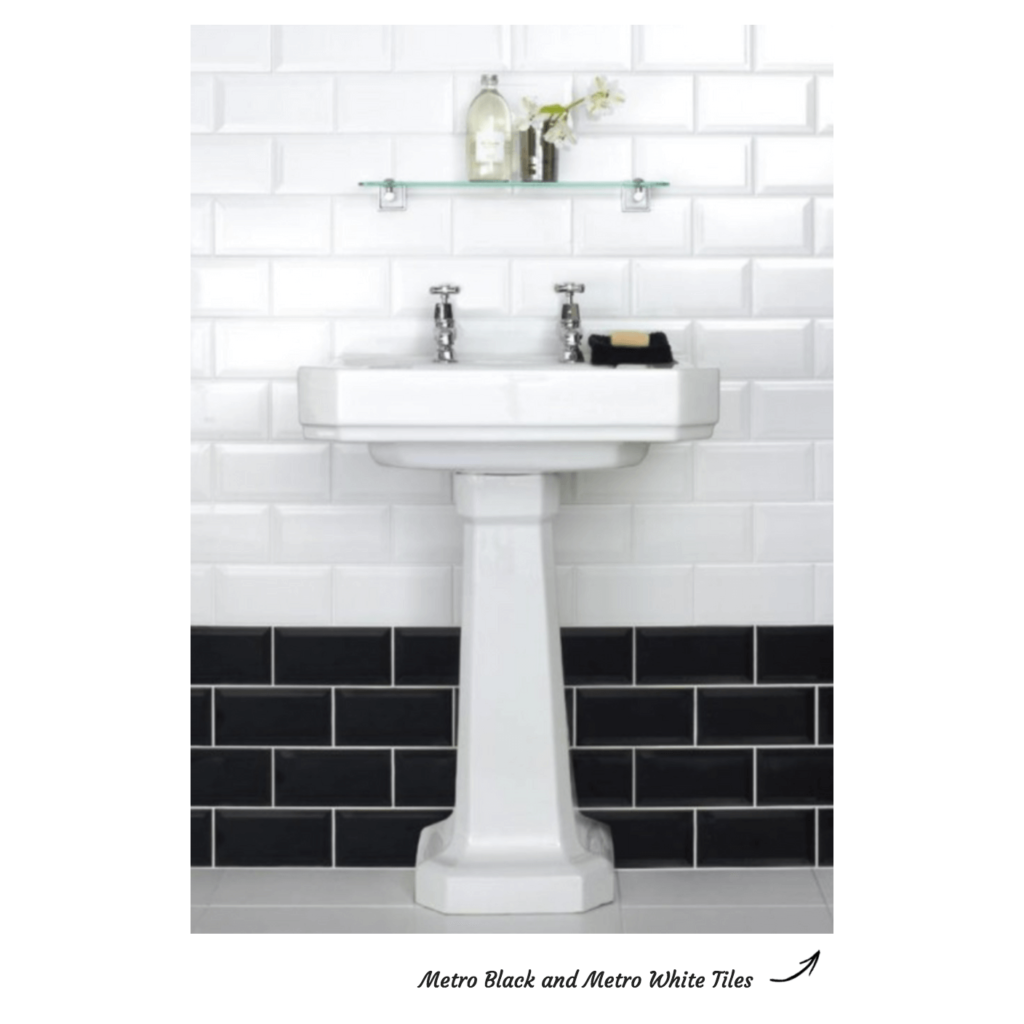
3. Vertical Brick Bond
Similar to our Brick Bond tile pattern, the Vertical Brick Bond lays subway-style tiles vertically, opposed to horizontally. This style is perfect for a feature wall in your bathroom or kitchen, adding height to the wall space.
You can also create a modern take on you room space by mixing gradients of bold colour, with an otherwise neutral colour palette.
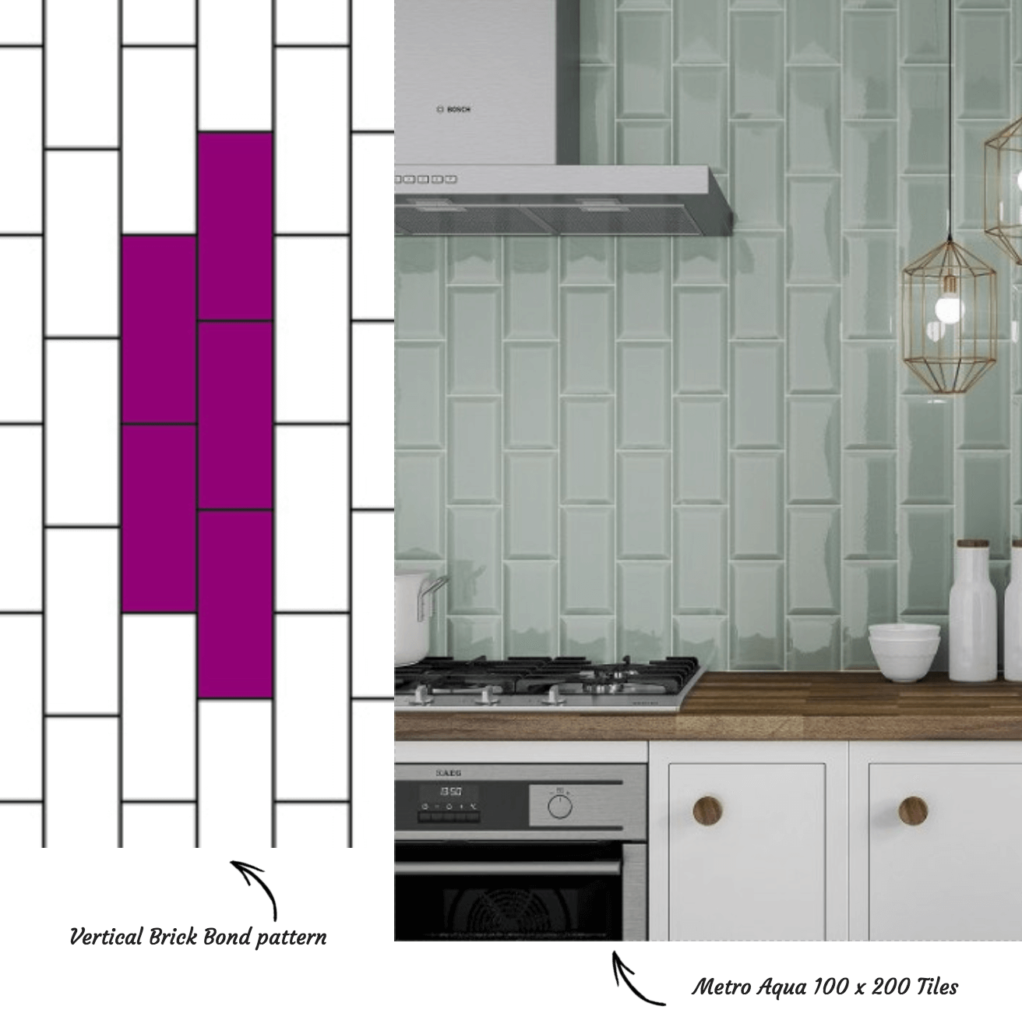
4. Linear
A linear tile pattern offers ease and simplicity when laying your tiles, without compromising on design quality. This pattern is in no way bland and by incorporating multiple colours of tile you can create a stunning checkerboard effect.
To achieve this look, you must use a square tile and lay them directly in line with one another. See below for an example.

Oppositely, you can use a single colour tile to create a minimal design that makes a statement in itself.
Tip: The Linear tile pattern looks great with small square tiles as a kitchen splashback or bathroom wash basin splashback. You could even tile an entire wall within a shower cubicle to create a dramatic feature element.
5. Hexagon
Hexagon tile patterns are a playful addition to create a geometric aesthetic. They can be used to enhance space with depth and visual interest.
You can easily achieve this pattern using our mosaic tile sheets, rather than laying individual tiles which can be a timely process. The familiar shape gives an understated yet stylish backdrop to the rest of your decor.
The below example shows our Kandy Ash Hexagon Mosaic styled in a kitchen. The various pearly tones within the tiles make a bold backdrop that draws your attention without dominating the room.

6. Modular
Modular patterns are perfect for creating unique and interesting designs on your walls and floors. Whether you’re using one style of tile or multiple styles of tile, a modular tile pattern is great if you’re looking for something different when laying your tiles.
There are different types of modular patterns that you can create. It all depends on the type of tiles you’ve bought. The image below shows two popular examples.
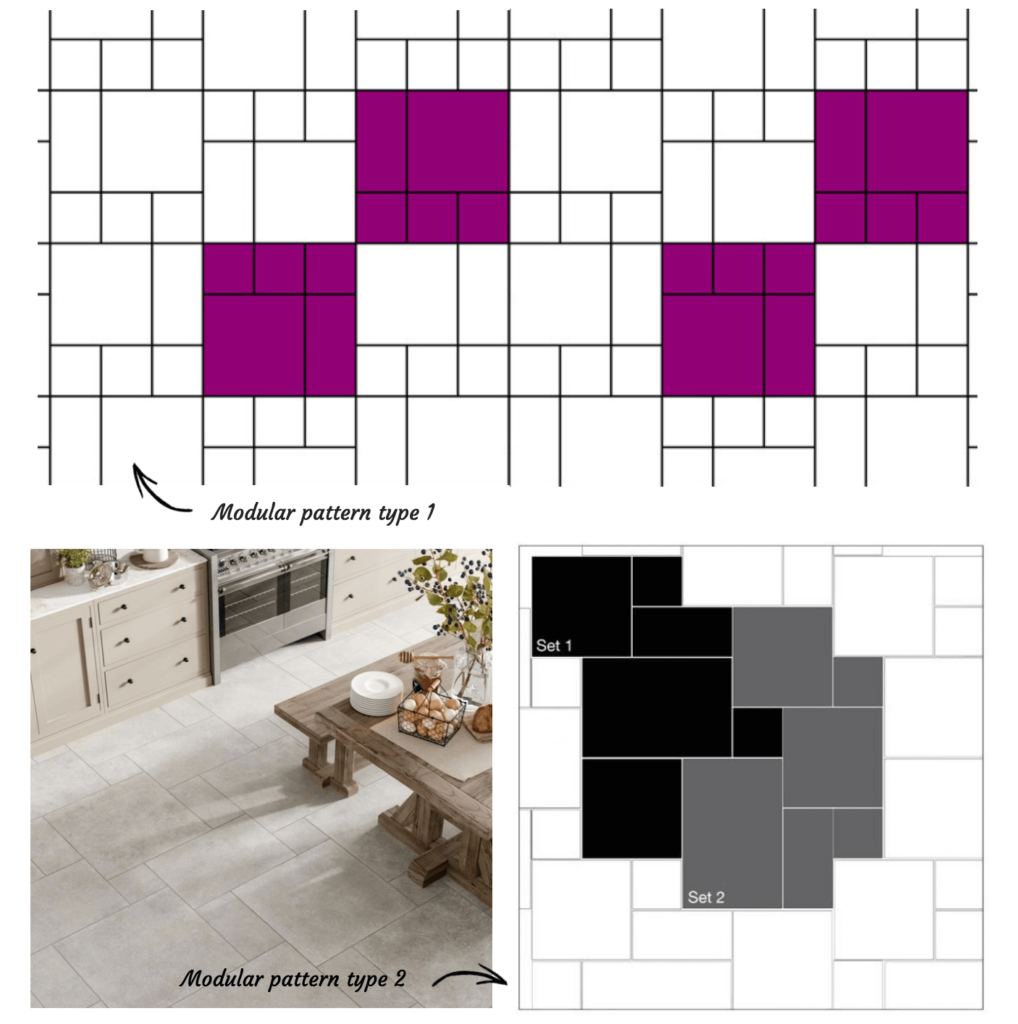
Tip: If you’d like to learn more about the best modular pattern for your choice of tiles, contact our experts.
Modular tile patterns work great for larger sized tiles as well as those of a smaller size. The Amiata Modular Opus Pack in Pebble make for a great kitchen floor.
The neutral shades are stunning and subtle yet the diverse layout of the tiles makes the floor look more exciting and captivating
On the other hand, you can use our Brass Polished Marble Mosaics to create another stunning effect, though this time on a considerably smaller scale.
The contrast of metal and glass within these tiles make for a popular and modern tile used on bathrooms and kitchen walls, though in areas where water is limited. These tiles should not be used in shower cubicles or as splashbacks.
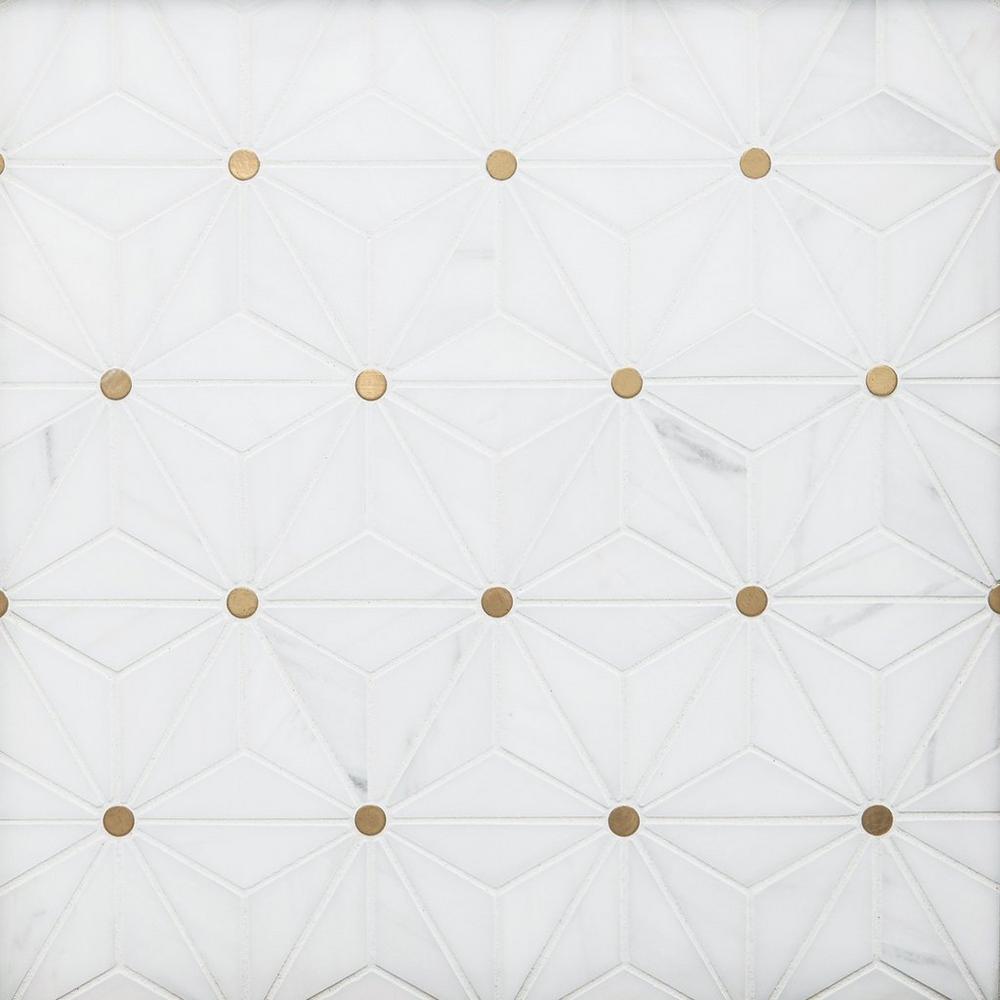
7. Basket Weave
The final tile pattern that’s stormed 2018, is the basket weave. If you’re looking for something a bit different when tiling your wall or floor, this is the perfect tile pattern.
The Basket Weave is a simple tile pattern that can really add to the design of a room and works best in smaller spaces such as half of a kitchen wall or similar. You can see an example of this below, featuring the Carrara Marble Basket Weave tiles.
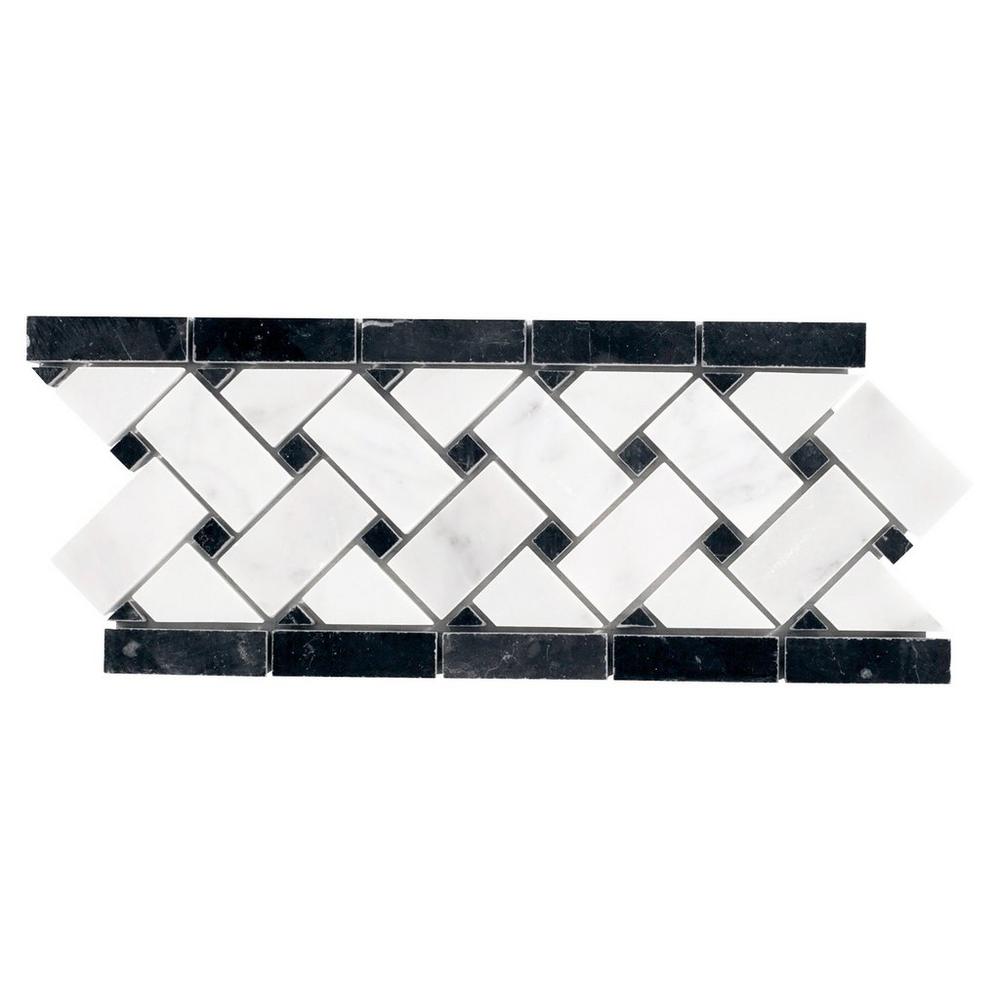
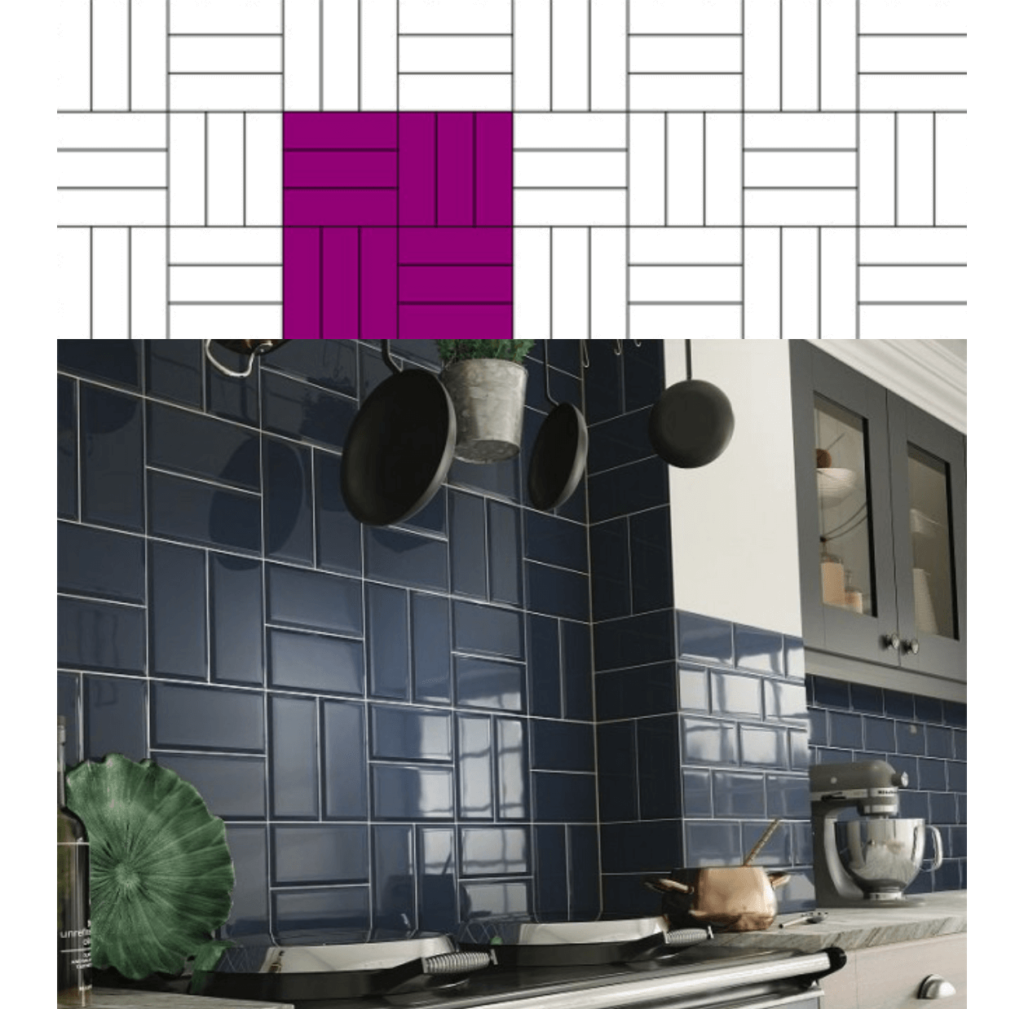
To create this look you need to be able to lay two or more tiles together so that the perimeter of them altogether is identical, making a square. Assuming you lay these first tiles horizontally, you then need to lay the need vertically and alternate the angle each time you lay a new set of two or three tiles.
